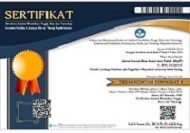Preserving cultural heritage: Integrating traditional values and local arts for sustainable tourism
DOI:
https://doi.org/10.33474/jisop.v6i1.21925Keywords:
arts preservation, sustainable tourism, cultural villageAbstract
Tourism significantly contributes to global economics, with Indonesia relying heavily on this sector for economic growth. However, tourism often challenges cultural and environmental preservation. This study explores the Cultural Village of Polowijen in Malang City, Indonesia, where Malangan masks play a central cultural and economic role. By integrating sustainable tourism principles, the research aims to develop a model for preserving Malangan masks, boosting economic growth while safeguarding cultural heritage. The study employs a qulitative approach. Joint Ministerial Regulation (PBM) Number 40 of 2009, which provides guidelines for cultural preservation through protection, development, and fostering, underpins the study. Findings indicate that sustainable tourism practices significantly contribute to both economic benefits and cultural preservation. Increased local engagement and awareness have been observed, with community members showing a strong commitment to preserving Malangan masks. Economic data reveal that cultural tourism development generates additional income and new employment opportunities. The regulation's implementation has successfully protected cultural heritage, enriched traditional arts, and promoted community sustainability. This study demonstrates that sustainable tourism can balance economic growth and cultural preservation, providing a model for other regions aiming to develop cultural tourism while safeguarding heritage.
References
Archer, B. (2005). The positive and negative impacts of tourism. In Global Tourism (pp. 79–102). Routledge.
Benner, M. (2019). From overtourism to sustainability: A research agenda for qualitative tourism development in the Adriatic. Journal of Economic Geography, 64(2), 74–87. https://doi.org/10.1515/zfw-2019-0016
Endah, N. H., & Nadjib, M. (2017). Pemanfaatan dan Peran Komunitas Lokal dalam Pelestarian Danau Maninjau. Jurnal Ekonomi Dan Pembangunan, 25(1), 55–67. https://doi.org/10.14203/JEP.25.1.2017.55-67
Gopalakrishnan, C., & Okada, N. (2007). Designing new institutions for implementing integrated disaster risk management: key elements and future directions. Disaster ODI, 31(4), 353–372. https://doi.org/10.1111/j.1467-7717.2007.01013.x
Guttentag, D. (2015). Airbnb: disruptive innovation and the rise of an informal tourism accommodation sector. Current Issues in Tourism, 18(12), 1192–1217. https://doi.org/10.1080/13683500.2013.827159
Higgins-Desbiolles, F. (2018). Sustainable tourism: Sustaining tourism or something more? Tourism Management Perspectives, 25, 157–160. https://doi.org/10.1016/j.tmp.2017.11.017
Higgins-Desbiolles, F. (2020). The “war over tourism”: challenges to sustainable tourism in the tourism academy after COVID-19. Journal of Sustainable Tourism, 29(4), 551–569. https://doi.org/10.1080/09669582.2020.1803334
Jaelani, A. K., Handayani, I. G. A. K. R., & Karjoko, L. (2020). Development of tourism based on geographic indications towards welfare stat. International Journal of Advanced Science and Technology, 29(3c), 1227–1234. http://sersc.org/journals/index.php/IJAST/article/view/6076
Jamal, T., & Robinson, M. (2010). The SAGE Handbook of Tourism Studies (1st ed.). Sage Publications. https://doi.org/10.4135/9780857021076
Kim, S., Whitford, M., & Arcodia, C. (2019). Development of intangible cultural heritage as a sustainable tourism resource: the intangible cultural heritage practitioners’ perspectives. Journal of Heritage Tourism, 14(5–6), 422–435. https://doi.org/10.1080/1743873X.2018.1561703
Kim, Y. J., Toh, S. M., & Baik, S. (2022). Culture Creation and Change: Making Sense of the Past to Inform Future Research Agendas. Journal of Management, 48(6). https://doi.org/10.1177/01492063221081031
Manzoor, F., Wei, L., Asif, M., Haq, M. Z. ul, & Rehman, H. ur. (2019). The Contribution of Sustainable Tourism to Economic Growth and Employment in Pakistan. Int J Environ Res Public Health, 19(16), 3785. https://doi.org/10.1002/sd.2059
Moleong, L. J. (2014). Metodologi Penelitian Kualitatif [edisi revisi]. Remaja Rosdakarya.
Richards, G. (2018). Cultural tourism: A review of recent research and trends. Elsevier Journal of Hospitality and Tourism Management, 36, 12–21. https://doi.org/10.1016/j.jhtm.2018.03.005
Richards, G., & Munsters, W. (2010). Cultural tourism research methods. CABI.
Rohman, M. F., Zurinani, S., & Fatmawati. (2022). Pengembangan Kampung Budaya Polowijen melalui Ikon Digital Pariwisata Sastra Ragil Kuning sebagai Strategi Bertahan di Masa Pandemi. Journal of Innovation and Applied Technology, 8(2), 1425–1432. https://doi.org/10.21776/ub.jiat.2022.008.02.1
Suradi, A. (2018). Pendidikan Berbasis Multikultural dalam Pelestarian Kebudayaan Lokal Nusantara di Era Globalisasi. Wahana Akademika, 5(1), 111–129. https://doi.org/10.21580/wa.v5i1.2566
Timothy, D. J., & Boyd, S. W. (2006). Heritage Tourism in the 21st Century: Valued Traditions and New Perspectives. Journal of Heritage Tourism, 1(1), 1–16. https://doi.org/10.1080/17438730608668462
UNESCO. (2019). The 2009 UNESCO Framework for Cultural Statistics (FCS). UNESCO Institute for Statistics.
Downloads
Published
How to Cite
Issue
Section
License
Copyright (c) 2024 Asti Amelia Novita, Rispa Ngindana, Endry Putra

This work is licensed under a Creative Commons Attribution-ShareAlike 4.0 International License.
.


_-_Copy.jpg)





